Dear Artist,
Last night I met with five of the 17 million artists who currently need to sell more of their art.
Two of my visitors came originally from a sales background. Two were young and disliked the subject of selling but were eager to get on with it. The other one had read a lot and taken courses — online, on the phone and in person. These courses included art marketing, eBay sales, art blogging, display advertising, selling yourself and your art, the business of art, licensing art, portfolio building, CV writing, direct selling without a gallery, use of art consultants, corporate art sales, generating buzz and PR, working with museums, art fairs and biennales, Tweeting and Facebooking, finding private patrons, approaching and developing relationships with commercial galleries.
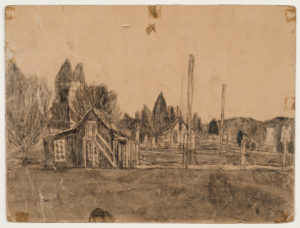
Untitled (House in landscape), n.d.
stove soot on found paper
9 x 12 inches
by James Castle (1899-1977)
This lady was a walking encyclopedia of art entrepreneurship who hadn’t sold one of her paintings in seven months. We could’ve spent the whole evening listening to her.
All of them felt selling was key to a happy life. While it might be hard for some of our readers to swallow, they thought cash flow would probably make creativity flow.
I quoted an old friend: “Paintings are sold when they’re painted, not when they’re sold.” This brought out some shouting. My thought was that all the suits on Madison Avenue couldn’t sell substandard art. It was pointed out to me that a sliced cow with enough bull will get someone to call it art and another to pay for it.
One of the sales guys put in that he had sold used cars that weren’t going to run more than a couple of blocks, and that he felt bad about it. Everybody agreed it’s best to feel good. The other sales guy let it drop that he had more paintings than the Louvre. He said he had made them, they were good paintings and everybody, including his wife, thought they were good paintings, and he was entitled to sell them.
Everyone left with more questions than they brought. Maybe you can answer some of them. Which is better — feeling good or getting good? What is good? Has everything already been done? Does it matter? What courses should monetarily artists take? How much of the current art-poverty is due to the current recession — or does the current poverty have something to do with sliced cows?
Best regards,
Robert
PS: “Money is better than poverty, if only for financial reasons.” (Woody Allen)
Esoterica: In times of poverty, get-rich-quick systems abound. “Take it easy,” I put in. “Why not just take the time to make what you think is better art?” With all the talk about marketing I wasn’t even sure painting was worth mentioning. “A conversation,” said Ambrose Bierce, “is a vocal competition in which the one who is catching his breath is called the listener.” I cleaned up my studio. It’s a nice quiet place.
This letter was originally published as “The plight of the undiscovered artist” on October 7, 2011.
The Letters: Vol. 1 and 2, narrated by Dave Genn, are available for download on Amazon, here. Proceeds of sales contribute to the production of The Painter’s Keys.
“I cannot afford to waste my time making money.” (Jean Louis Agassiz)
“It is a sad fact about our culture, that a poet can earn much more money writing or talking about his art than he can by practising it.” (W. H. Auden)
Featured Workshop
Join Julie Schumer and James Koskinas and take a leap into the unknown in this 2 1/2 day intensive acrylic workshop. Through a series of structured exercises designed to help you loosen up, we will explore various elements of a non-objective painting including color, composition, and eye flow, line, value and texture using acrylic paint and a variety of mark making tools.
Bring your artistic passion and the willingness to try something different and gain a new perspective. This workshop is available to all levels but is perfect for those new to abstract painting. Cost is $595.00. A materials list will be provided or materials can be provided for an additional $100.00
Featured Artist
There’s a hush… a palpable electric presence radiating from some of the paintings in New York City’s Metropolitan Museum of Art and in the galleries of the Frick Collection.

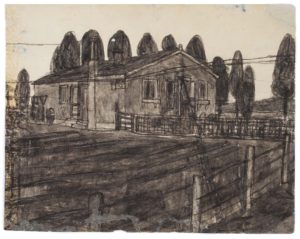
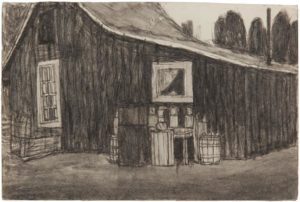
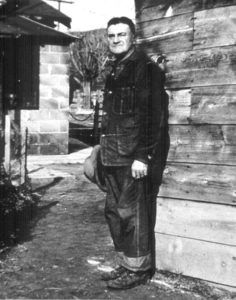

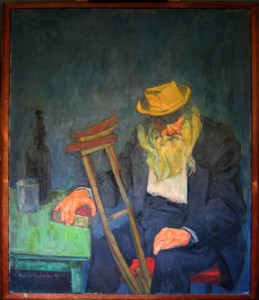



32 Comments
Damien Hirst’s sliced cow is also a red herring, at least in this context. There is ample room in the world of art for work of all kinds: Abstract, Figurative, Conceptual – you name it. Yes, some of it will sell solely on the strength of a convincing sales pitch but that is really not our business – quite literally.
It’s for the rest of us to make our pictures as good as we possibly can – then we personally will feel enriched and fulfilled in the countless ways that Robert and Sara have spelled out for us over the years. Selling is the icing on the cake , not an end in itself. And many a fine artist’s work has been ruined by too much commercial success – though many of us would no doubt be more than happy to grasp this particular nettle (to squeeze in yet another corny metaphor).
The people Robert had to deal with had it the wrong way round – something to do with carts and horses I think.
Bless him for his patience and forbearance.
put your heart not your checkbook into It and they will come, Thank you Robert and Sara
I taught painting for a decade, and was always surprised when a student, after completing their first painting or two, would ask about how to go about selling their work. I would tell them that when you start painting with sales in mind, you begin to paint with the desires of the buyer in mind. Take time to paint and develop your skills with only your own voice in your head, this way you will find your unique approach much more quickly. Then those sales will come!
Great advice! I need to listen
“I cleaned up my studio. It’s a nice quiet place.” I believe the key to answering Robert’s questions lies not in lively debates about marketing and sales, but in stillness and silence. There in the intuitive “studio” a creator may discern next steps on the path that leads to an individual’s unique artistic destiny. As one who never intended to become a painter in the first place, I can attest to what happens when you obey a voice that says, “Do art!” Sixteen years later I continue to be amazed at how simply attending to quiet urges brings me to a present moment in which, invariably, I find myself making spontaneous choices that lead to unexpected places. Over time, obeying these gentle prompts has led not only to remarkable meetings of pigment with canvas, but also to people who have appreciated and purchased my work. I think of Dr. Seuss– “Oh, the places you’ll go….” Right now, I’m in Mexico, immersed in creating Birds Fly In: A Human Refuge an art installation project related to migration issues at the US/Mexican border. I’m producing work I barely imagined a year ago–video, paintings, music–all of it a rich outpouring from that inner studio I try to keep clean and quiet. What’s next, I wonder?
All of the comments today are reaching out to me, but, Ellie, for some reason yours seems to really hit an open spot inside me today. It flashes through my mind that I would be happy painting with you some day. I’m putting myself into artistic endeavors after many years, and it’s exciting. Even if I only get to it a few times a month. Anyway, enjoy all the places you’ll find..
As a painter (a woman painter who is now over 60 years old at that) who has sold over half of her paintings each of the past eight years, at the high end of the emerging artists market (and higher than established painters in the Canadian market), without consistent gallery representation or serious art market connection, I have some thoughts on this.
Whoever said that “paintings are sold when they’re painted, not when the are sold” has it about right. Let’s unpack this a bit. If a painting is sold when it is painted there is a good chance that the painting has strength, integrity, skill, vision and that little extra that can’t be defined. We know these paintings when we see them, no matter the approach or genre or year painted. To create these kinds of paintings takes years of practice, study, dedicated focus to our craft and a devil-be-damned risk-taking kind of attitude. The painter must forget about an audience for the work while painting. The focus must be on painting the best possible work, one painting after another, for hundreds of paintings. A painter must have a solid, ongoing painting practice.
Once this is in place then what? How does the painter get the work sold? Another part of the painter, than the part that does this magical best work, must step forward and be able to present this work to the world or have someone else who can do it for them such as a spouse, a brother, or an art dealer or gallery. I, for the most part, have taken the first route even though I did show in galleries when I was younger (and still working at my day job). And here is the thing., if you haven’t started a work with a vision, an intention or to solve some kind of life/painting problem, it is pretty hard to talk about it to a potential buyer. If you are an art dealer and you are representing the work, the same is true if you don’t know the story behind the work. Sadly or not, paintings seldom sell themselves.
So, if I have any advice at all for selling work, it is to focus on your painting practice and dig into your vision and intention for the work. Learn your craft and approach so well that it is easily identified as your own. Pay no heed to the art market or what is or isn’t selling, the latest fades or the stacks of paintings in your studio or wondering how you are going to pay the rent. Paint the very best work that your studying, skill and risk-taking will allow. Once this is done, switch to finding good homes for your work. Tell the story of your orphan paintings. Display them in the best light. Research the appropriate price and learn how to market and sell your work in a way and place that is most suited to your own approach to life and that of your work. There will be the paintings that sell by breaking all the rules of common sense but generally, you must have a solid active ongoing, year-after-year dedicated art practice, with a vision about where you want to take your work for its own sake! As mentioned in a previous post by Sara, if there is too many paintings already in the studio, select a portion for the burn pile to make room and keep going. You might be surprised what a review for the burning pile might open up as a further direction to reach towards.
Bottom line? I sold my first drawing when I was twelve and oil painting when I was fourteen. Neither were very good technically but my heart was spilling over the edge of each and the purchasers gave them good homes and followed my progress for years. I was fifty-two before I was situated to paint full-time (and still have enough to live on without selling a thing). During those in-between years, only a few paintings were painted each year and only a few of those sold. Some years there were only a couple completed and none sold. But I didn’t give up and neither did my audience. No matter what day job I had, people would introduce me as an artist or painter. My cheeks would burn red because I really didn’t have the time to be painter and I felt like a fraud. But I held on to my intention and kept going. My hard won practice leads me to suggest, focus on painting long and hard with intention and vision. Then turn your head, heart and marketing skills towards selling them or finding representation for your work. Two of my paintings are now in Canadian historical landscape collections with original Emily Carr and Group of Seven oil paintings. This is the only real connection I have with the larger traditional art market – yet. ;) But it is still possible to have good homes for my paintings and art collectors with substantial collections. It is now enough to be called “a living” and I get to do the paintings I am most passionate about, on my terms, finding homes for them online and in my small seasonal gallery and through the home studio. My suggestion is strong – focus on your art practice with everything you have as a painter, take risks on the canvas and then put your mind to marketing and selling this “best work”.
Terrill, your landscapes are absolutely stunning and alive with color. You’ve certainly captured the essence of the Canadian landscape.
Thank you Elaine and so glad you had a chance and took the time to have a look! Drop by anytime :)
Thank you for this heart-felt advice and your time in typing it all out.
You are most welcome Sherrie. I was on a roll this morning as this is such a common topic amongst artists and wannabe artists. Glad it hit the spot.
Brilliant! I am sitting here, dark outside before sun up reading your comment and am uplifted by it, I know that really the only thing that matters is to be excited and overjoyed with your last painting. And to feel you’ve taken a big leap or risk that at the time made you feel a bit scared or on the edge and every time you look at the work the best part is that part… I need to keep the nagging monkey on my shoulder quiet, who keeps saying ‘but it wont sell because it’s not what ‘they’ like or at least put him back in his cage!
Thanks for writing your comment, it helps!
Hi Terrill,
Thank you for your comments regarding painting your utmost and with your whole heart while disregarding painting for the audience. Your writing has helped me to see what I have been needing to hear (read). I have been painting and selling for over twenty years, and somehow lost my way with my thinking. I have a complex story that has caused a lot of confusion for me, and I am very grateful for your streams of thought and the light that you shed on why one should paint and with what kind of priorities.
it all depends where you live, in a small religious town just forget it.
I have to agree that there is an element of truth, Zidonja, that “it (all) depends where you live'”. Or at least, part of it. Sometimes we get lucky, other times we get creative when we pay attention to what is around us. I encourage you to be open to seeing with new eyes. Sometimes the Universe surprises us in the most amazing ways! But we have to be open to possibilities……….
Having started to paint about 11 years ago, I already had more pictures than I knew what to do with. I had sold a few here and there at our local art guild and to friends. But marketing and approaching galleries was not of interest to me in terms of a way to spend my time.
Fast forward four years. My husband and I had bought a sweet home in a fab tourist town in the rocky mountains of Canada. Visitors passed by day after day on the walking path between the river and our house. Hundreds if not thousands of photos were taken of the place where we live. Hmm, I thought. Why not turn this to my advantage and maybe inspire and delight peeps while I’m at it? Or as my husband jokingly said, “Charge ’em”.
So I went through the various hoops and obtained licensing from our Town to sell from my home studio. Although we are not allowed to exhibit our wares in our yards, as far as I know there are no rules that prevent me from placing my paintings on ‘secondary easels’ (term coined by our inimitable Robert Genn) and letting the oil paint dry outdoors in my backyard on nice days in the summer. Six to 12 months to dry oil paint, yes??
This summer was year 2 of my endeavour. You cannot imagine how glad my heart is when I am out there visiting with wonderful folks from all over the planet. And occasionally painting. And selling bits and pieces here and there. I invite you to pop in now virtually and when you come to Our Town, please come by for tea and crumpets.
https://photos.app.goo.gl/ZiruR1BUZ2FvkuUr6
Cheers,
Verna
Selling reflects only marketing, never quality. We have art “teachers” because they need an income; they only are diluting the art world, not enhancing it. True artists learn by seeing, practicing, experimenting ON THEIR OWN.
Spot on!
Yes… original and creative art is something you need to do yourself.
I. Had. an Artist. Friend. Who won. 2. Prix. De Rome. Prizes. ,and. Was published. In. Playboy. And. Penthouse. magazines. Won. 100. Gold. Medals. From. Society. Of. Illustrators New York. City. He could. Not. Get. Any. Gallery. In New. York. To. Represent. Him. Because. He. Was. Published. In. Playboy. And. Penthouse. Magazines!!!!! This. IsAll. True. !
My. Artist. Friend. Banned. From. Exhibiting. By. New. York. Galleries. Because. Was. Being. Published. By. Playboy. And. Penthouse. magazines. He. Got. Very. Depressed. And. Finally. OD ed—-sad. Sorry. No. ID. given. ——-
I have created almost 900 works of art in a 48 year career. I have sold, gifted (a few, to friends and family) and donated (a dozen, or so to charities) more than 650 of my creations. I have only rarely had a dealer to help with sales. The fact that, in the past, I worked in advertising and promotion along side my painting career has helped. So far my participation in group shows numbers 125. (I submit to a half dozen jury shows per year and curate and organize group shows with artist friends/acquaintances.) I have had 45 solo shows–mostly organized by me. I do not try to create a painting that will sell. When I create a work of art, I make it for ME. I am thrilled when my paintings engage the appreciation and affection of others. If they sell, that’s simply a bonus.
Excellent post. Thank you.
I wonder, in this weird economy, how young, ambitious artists can underwrite their lives — home, food, rent, transportation, utilities, all the things that most young people in urban centers can barely afford any more. Selling a painting, in my experience, is an affirmation that you’re on the right track. So many visible artists have found their “voice”, their style that is recognizable or pleasing to buyers. What is hard is to stick to your own instincts, and keep improving technically. There is a gallery owner in Santa Fe, I think it is, who seems to make his living by selling space in his catalog, more than actually selling paintings.
What can young people do to support themselves while waiting for art sales to come…what I did decades ago…do some other paying work and do art evenings, weekends, holidays etc. When it comes, it’s time to quit the other and do art. Meanwhile, save your money when you can, don’t buy a lot of toys and finally tell someone you’re not taking the promotion they offer…you’re going home to paint.
Thank you, Sara, for reposting this classic! I laughed out loud at Bob’s words and at myself, which is the best laugh of all. I could see and hear your father so clearly, delivering his humorous wisdom. The second last sentence in esoterica was especially hilarious! Thank you!
I enjoyed this article too. Today at the art group I paint with on Tuesdays, we had a short discussion about whether artists should date their paintings. The general consensus was that best not, certainly not on the front as used to be done in the past. The feeling being that if a painting is a few years old (even though it might never have been shown or put up for sale), the perspective buyer might not buy it because they’d wonder why it hadn’t sold. already. Funny logic but it sort of made sense to me, henceforth no more dates on the front of my paintings. Now I’ll probably sell a lot more!
Some years ago I had an urgent call from a gallery owner who had sold one of my paintings and had it returned because the purchaser saw the date written on the back when she wanted a “fresh one” of mine. Fortunately I was able to sell her another undated one but since then I”ve followed Robert’s advice and attached all the info and date on a seperate pece of canvas stapled internally.
Also being a gallerist I advise all my artists to not date their paintings on the front.
A wanna-be painter I know is big into watching painting videos. Yesterday he came by, excited to the gills about what he’d seen. He’d watched how a puppy came to life on canvas. He watched a landscape emerge out of nothing. He could learn to paint rocks — amazing! I asked if he’d painted along with the videos but he had just watched. I listened as he spilled over with excitement and encouraged him to move forward with becoming a painter by doing what painters do — paint! A lot. Every day. For most of us who sell our work, the sales come naturally after enough canvas has been covered, enough mistakes have been made and enough time and energy put into painting has transformed our lives. It’s not a matter of making sales, it’s a matter of having something to say and becoming fluent in the language of paint.
I have already reconciled myself to the fact that my family will have to deal with all my artwork once I move on to that great studio in the sky…
It’s all well and good to be romantic about art and being good. But when your house starts filling up with good paintings, selling is a damn nedessity!
I have tried many times unsuccessfully to change my email address. It says the new email is in use. It is not. Help
I have been fortunate to do art with its peaks and valleys. For my kids sake, and for better skill sets, i wish i had given up my stubborness of not quitting years ago and not subjected our family to the elusiveness of steadiness and stability, but it is my best skill set. But even so, sadly inpredictable, unreliable to provide $
Dont know if its Gods will for me to literally do it anymore. If i had had time ,$ , energy to raise a family amd do art i would have. But my faith was all or nothing. I could never do both.- work a job and work at art. Art is all consuming.
Sacrifice. Dementing at times.
But its all about the process- right? And personally for me its about now- my awakening, acceptance of this season, to humbling experiences.
Sorry to offend but Art has been a mistress. A
double edged sword. I thought i was doing the right with my talent- gift but i couldnt slow down to see that – or want to hear others say that it was an idol. Im grateful for everything. And as it pertains to art,- grateful having been able to make pieces that i and others enjoy, along with some fat times.